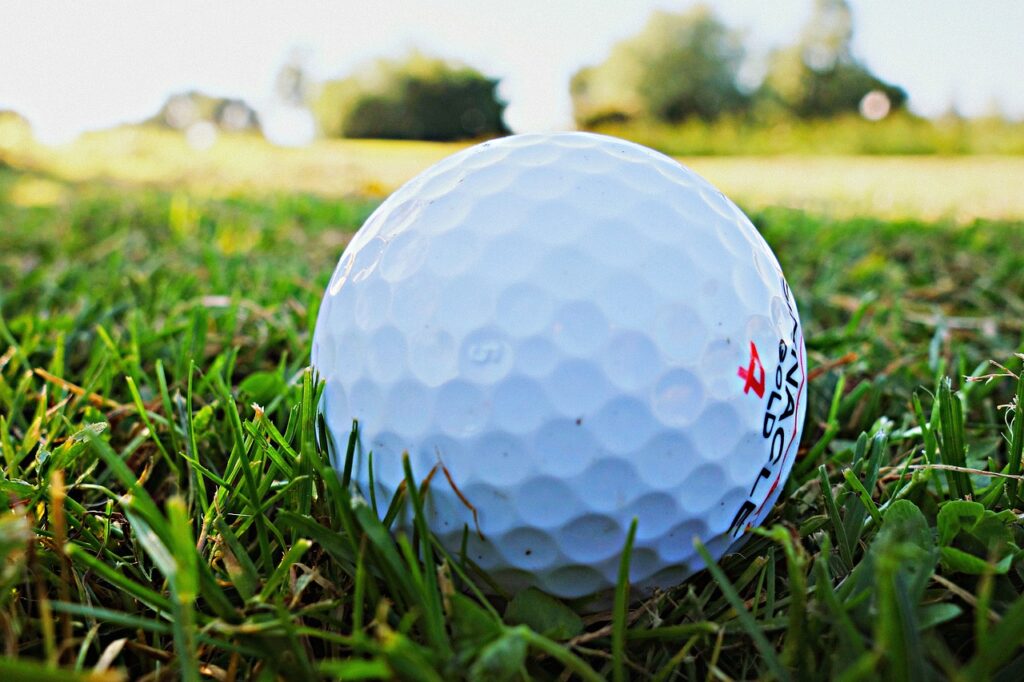Golfing Through Golden Years: Arthritis Management for Seniors
Have you ever thought about your love for golf and wondered how to keep enjoying it as you navigate through your golden years with arthritis? The sport that has given you endless joy, camaraderie, and those crisp morning drives might seem more challenging now, but the good news is, it doesn’t have to be. By understanding arthritis and how it affects your body, you can manage the pain and continue to play the game you love.
Understanding Arthritis
Arthritis isn’t just one condition but rather a term encompassing around 100 different types. Two of the most common types among seniors are osteoarthritis and rheumatoid arthritis.
Osteoarthritis
Osteoarthritis often occurs due to wear and tear on your joints. It usually affects the hips, knees, and hands, leading to pain, swelling, and reduced motion. Imagine it’s like the grooves on your trusty old putter wearing down over time. Without those grooves, the putter doesn’t perform as it once did.
Rheumatoid Arthritis
Unlike osteoarthritis, rheumatoid arthritis is an autoimmune disorder. Instead of wear and tear, your immune system mistakenly attacks your joints, causing inflammation, pain, and eventually joint damage. Think of it as if your best caddie suddenly started sabotaging your game by hiding your favorite clubs.
How Arthritis Affects Your Golf Game
Your hands, knees, shoulders, and back may not be as agile as they used to be, making every swing and putt more challenging. Yet golf isn’t just a physical game; it’s mental and social too. The idea of giving it up isn’t appealing, so let’s look at how arthritis impacts the physical aspects and how to address these challenges.
Hands and Grip
Your grip strength can influence your ability to control the club. Arthritis in the hands and fingers can make gripping painful and less secure. You might find it harder to hold the club or experience pain after playing.
Shoulders and Swing
The shoulder joint is pivotal for a smooth and powerful swing. Arthritis in the shoulders can restrict this motion, affecting your swing’s range and force.
Knees and Balance
Strong, stable knees are crucial for maintaining balance during your game. Arthritis can lead to stiffness and pain, making it difficult to walk the course or maintain a solid stance.
Back and Posture
Your spine’s health plays a significant role in your posture and swing mechanics. Arthritis in the back can lead to discomfort and reduced flexibility, further impacting your game.

Managing Arthritis to Keep Playing Golf
The thought of managing arthritis may seem daunting, but with a mix of medical intervention, physical therapy, and lifestyle adjustments, you can still enjoy your rounds. Here’s a roadmap to help you along this journey.
Consult with Healthcare Professionals
First and foremost, consult your physician or a rheumatologist. They can provide specific recommendations based on the type and severity of your arthritis. Medications, physical therapy, and sometimes even surgical options may be considered.
Pain Management Strategies
Medications
Common medications include NSAIDs (Nonsteroidal anti-inflammatory drugs) such as ibuprofen and aspirin, as well as DMARDs (Disease-modifying antirheumatic drugs) if you have rheumatoid arthritis. Your doctor will guide you on what works best for your specific condition.
Physical Therapy
Physical therapy plays a crucial role in building strength around your affected joints. This can help alleviate pain and improve your range of motion. Exercises are often tailored to strengthen muscles while minimizing strain on your joints.
| Type of Exercise | Benefits |
|---|---|
| Stretching | Improves flexibility |
| Strengthening | Supports joint stability |
| Aerobic | Enhances cardiovascular health |
| Balance | Prevents falls and injuries |
Lifestyle Adjustments
Diet and Nutrition
Eating a balanced diet with anti-inflammatory foods can help manage arthritis symptoms. Omega-3 fatty acids, found in fish like salmon and mackerel, and antioxidants, found in fruits and vegetables, are your allies.
Weight Management
Carrying excess weight puts additional strain on your joints. Regular physical activity and mindful eating can help you maintain a healthy weight, easing the pressure on weight-bearing joints like your knees and hips.
Protective Gear
Consider using protective gear designed for golfers with arthritis. Ergonomic clubs, specialized gloves, and cart usage can make your game less painful and more enjoyable.
Modifying Your Golf Game
By making small adjustments, you can continue to play golf without worsening your symptoms. Let’s explore some suggestions that can make the game more manageable.
Equipment Adjustments
Clubs
Consider switching to clubs with more forgiving shafts and larger grips. These modifications can reduce the strain on your hands and wrists. Lightweight graphite shafts can also lessen the impact on your joints.
Gloves
Invest in specialized gloves that provide extra padding and support. Some gloves are specifically designed to aid golfers with arthritis, helping you maintain a secure grip without discomfort.
Carts
Walking the course might be challenging, especially if you have knee or hip arthritis. Using a golf cart can reduce the strain on your lower body, allowing you to conserve energy and minimize pain.
Swing Adjustments
Shorter Backswings
A shorter backswing can reduce the strain on your shoulders and back. Focus on a compact, controlled swing that prioritizes accuracy over power.
Smooth, Slow Tempo
Slowing down your swing tempo can help reduce the pressure on your joints. Aim for a fluid, smooth motion rather than trying to generate maximum power. This adjustment can also improve your accuracy and control.
Proper Footwear
Wearing comfortable, supportive golf shoes can make a significant difference. Look for shoes with cushioned insoles and good arch support to help reduce the impact on your feet, knees, and hips.
Pre-game Preparation
Taking the time to warm up and stretch before a round can help reduce stiffness and make your game more enjoyable. Incorporate gentle stretching and light exercises to get your muscles and joints ready for action.
Warm-Up Exercises
Spend at least 10-15 minutes warming up before you start playing. Gentle stretches, such as shoulder rolls and wrist flexes, can help loosen up your joints. Incorporate light cardio, such as walking or jogging, to get your blood flowing.
Stretching Routine
Prioritize stretching exercises that target the areas most affected by arthritis. Focus on your wrists, shoulders, knees, and back. Hold each stretch for at least 20-30 seconds to fully benefit from the exercise.
Staying Hydrated
Proper hydration is essential for joint health. Drink plenty of water before, during, and after your game to keep your joints lubricated and prevent cramping.
The Mental Aspect of Golf with Arthritis
It’s not just your body that needs attention; your mind plays a significant role too. Managing arthritis while continuing to enjoy golf requires a positive and resilient mindset.
Stay Positive
Maintaining a positive outlook can significantly impact your ability to manage arthritis. Focus on what you love about the game—the camaraderie, the challenge, and the joy of being outdoors.
Set Realistic Goals
Adjust your expectations and set realistic goals for your game. Celebrate small victories, whether it’s a well-executed shot or completing a round without too much discomfort.
Practice Mindfulness
Mindfulness techniques, such as deep breathing and meditation, can help you manage pain and stay present in the moment. Incorporate these practices into your routine to enhance your overall well-being.

Building a Supportive Community
Having a supportive community can make a huge difference in your golfing experience. Surround yourself with friends, family, and fellow golfers who understand and support your journey.
Connect with Fellow Golfers
Join golf clubs or communities that focus on seniors and individuals with arthritis. Sharing experiences and tips with others who face similar challenges can provide encouragement and motivation.
Communicate with Your Golf Partners
Be open with your golf partners about your condition. Let them know about your limitations and how they can support you on the course. Most people are understanding and will appreciate your honesty.
Seek Professional Guidance
Consider working with a golf instructor who has experience working with seniors and individuals with arthritis. They can provide personalized advice and modifications to help you play your best game.
Embracing the Joy of Golfing Through the Golden Years
Golfing through the golden years with arthritis is entirely possible with the right strategies and mindset. By understanding our bodies, making necessary adjustments, and surrounding yourself with a supportive community, you can continue to enjoy the sport you love.
Focus on the Positives
Embrace the positives of your golfing experience. Enjoy the fresh air, the beautiful landscapes, and the satisfaction of a well-played shot. Remember that golf is as much about enjoyment and relaxation as it is about competition.
Stay Active and Engaged
Continuing to play golf keeps you physically active and socially engaged. Both are crucial for your overall well-being, especially as you age. The game provides an outlet for physical exercise, mental stimulation, and social connection.
Celebrate Your Resilience
Managing arthritis while playing golf requires resilience and determination. Celebrate your ability to adapt and continue pursuing your passion. Acknowledge the effort you put into managing your condition and take pride in your accomplishments.

Final Thoughts
Keeping your love for golf alive while managing arthritis is not only possible but rewarding. By making thoughtful adjustments, staying positive, and seeking support, you can continue to enjoy this wonderful game well into your golden years. Here’s to many more rounds, with the same joy and enthusiasm as ever!







